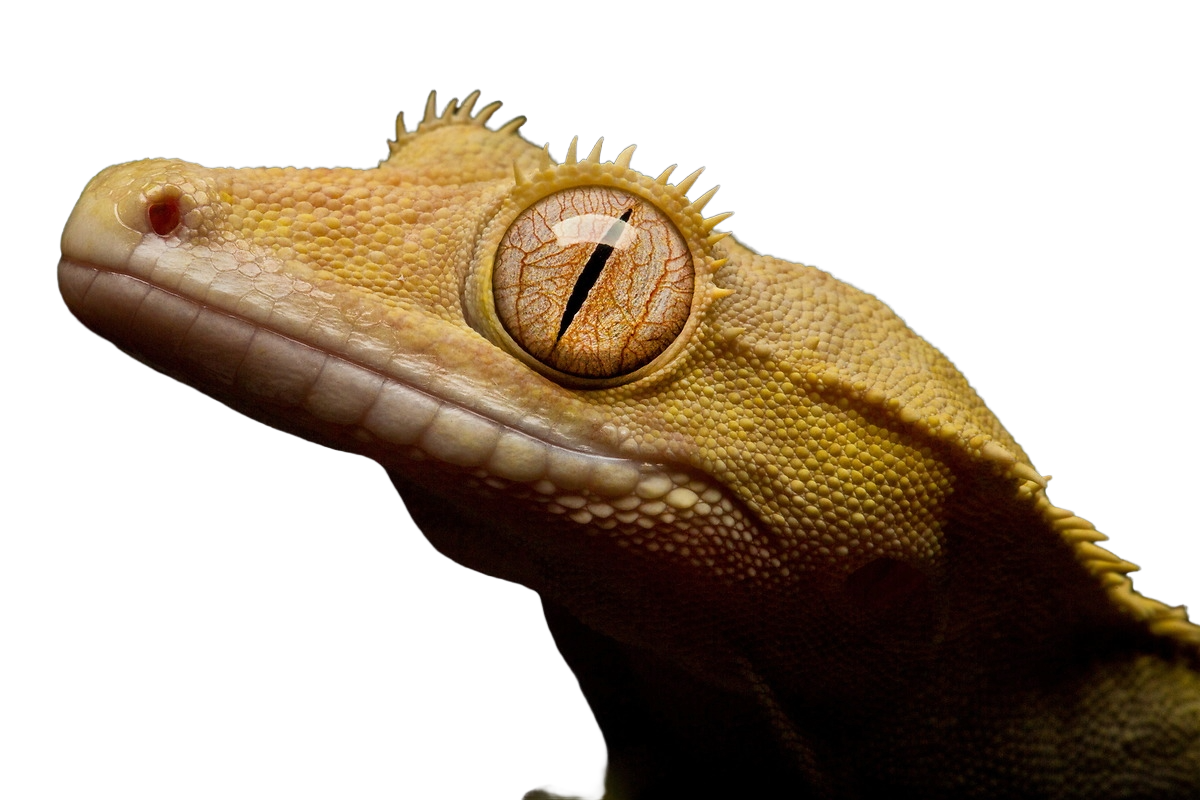Species overview
Crested geckos inhabit humid, forested habitats where they climb at night and rest during the day. Males should be housed separately; females can be grouped with ample space.
Quick, trustworthy care info for Crested Geckos.

Crested geckos (Correlophus ciliatus) are gentle, arboreal lizards native to the forests of New Caledonia. Their eyelash‑like crests, prehensile tails, and calm nature make them welcoming for many keepers.
They were thought extinct until the 1990s and now thrive in captivity. Start with a vertically oriented enclosure, leafy cover, and steady humidity for success.
Crested geckos inhabit humid, forested habitats where they climb at night and rest during the day. Males should be housed separately; females can be grouped with ample space.
House an adult in at least an 18×18×24″ terrarium. Provide vertical space with branches, vines, and cork bark plus dense plant cover. Coco fiber or bioactive substrates support humidity; keep moist, not soggy.
Maintain 72–78°F. Provide gentle supplemental heat only if rooms fall below 65°F, and avoid highs above 85°F. Monitor with reliable thermometers.
Keep humidity at 60–70% with daily misting and good ventilation. Allow cycles of wetting and drying to prevent stagnant air; monitor with a hygrometer.
Use a fruit‑based commercial diet as the staple (e.g., Repashy, Pangea). Offer gut‑loaded insects weekly for variety; dust with calcium and vitamins. Remove uneaten food promptly and keep fresh water available.
Provide multiple hides, climbing routes, and visual barriers with plants and cork to support nocturnal exploration. Rearrange decor periodically for novelty.